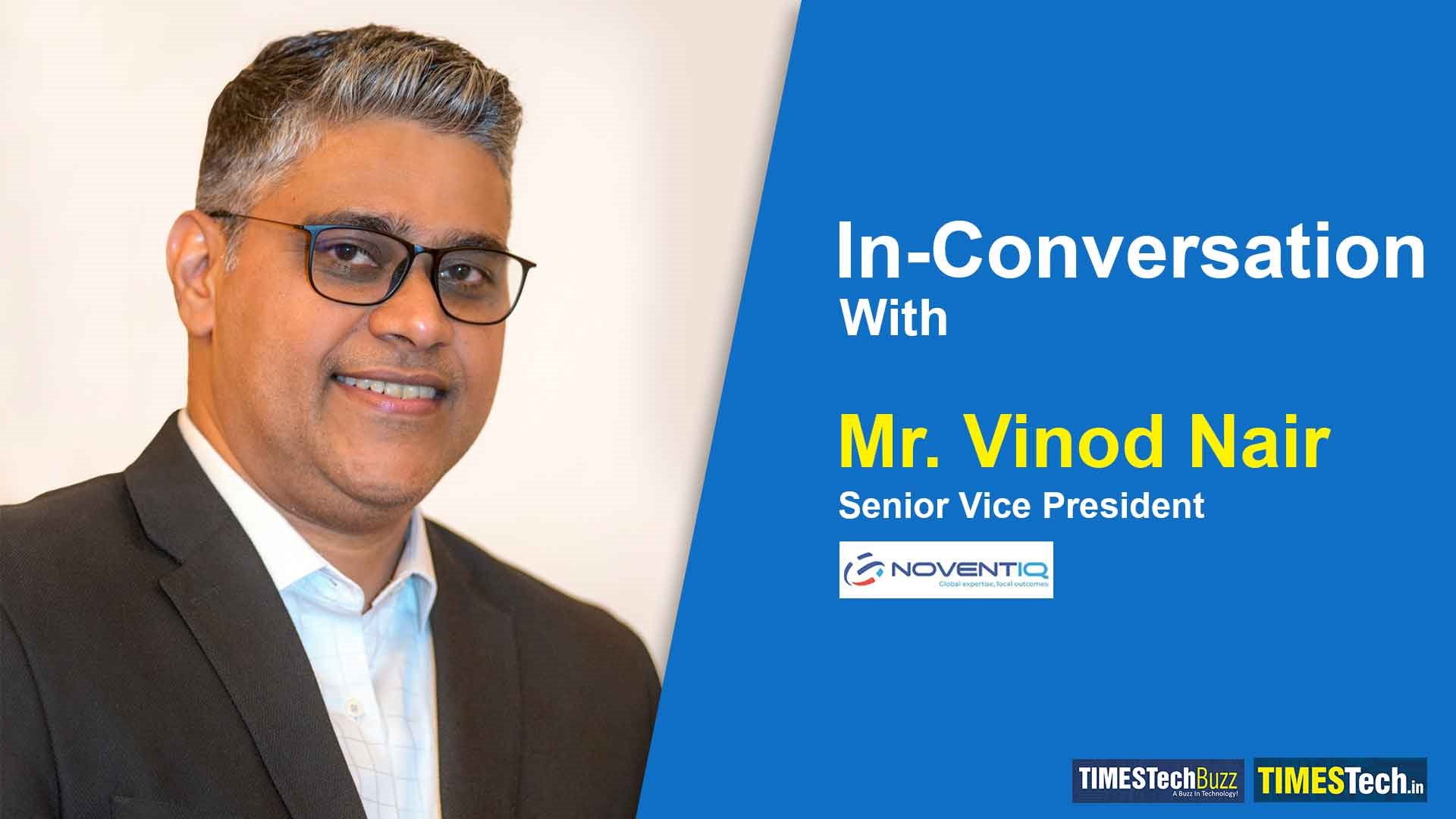As 5G roll-out and adoption picks up, another trend that will gain importance is Edge Computing. With the rise of IoT, processing data at or near the edge of the network will become increasingly important. There could also be new use cases utilizing a combination of these technology trends eg. Data generated from an IoT device fed into a generative AI model could create advanced use cases underlines Vinod Nair, Senior Vice President, Noventiq India while in talks with TIMES TECH BUZZ. In this latest interview, we try to demystify the trends shaping the IT industry in 2023, the evolving digital workplace, and how sustainability is defining sectors across the globe. Read the edited excerpts below.
Timestech: What will some of the prevailing trends be in the IT industry in 2023? What impact do you anticipate it will have on the tech industry?
Vinod Nair: The trends in the IT industry are usually a reflection of the prevailing business priorities. Enterprises globally are exploring avenues to improve their ability to adapt to the dynamic needs of their customers. Generative AI is therefore becoming a crucial tech trend that will find wide acceptance in various industries. Enterprises are therefore receptive and eager for industry use cases on AI and ML which can help them to leapfrog over the competition.
As 5G roll-out and adoption pick up, another trend that will gain importance is Edge Computing. With the rise of IoT, processing data at or near the edge of the network will become increasingly important. There could also be new use cases utilizing a combination of these technology trends eg. Data generated from an IoT device fed into a generative AI model could create advanced use cases.
While the digital imprint of enterprises increases so does the surface area of cybersecurity attacks and addressing these risks is going to be another key imperative for enterprises. We will need to capitalize on advanced cybersecurity measures and technologies to protect our client’s data and networks.
Timestech: In a constantly evolving digital workplace, what are the best ways for leaders to use technology to re-engineer operating models?
Vinod Nair: I understand the significance of this and leaders today must embrace technology to create an engaging, productive, dynamic, and secure digital workplace by prioritising the “human” aspect of work. At Noventiq, we prioritize creating an engaging work environment by incorporating gamification, personalized learning, and virtual team-building activities into our operating model. We also leverage AI and other technologies to provide employees with digital co-pilots that automate repetitive tasks, provide scheduling assistance, and help with reminders to increase productivity.
To be dynamic and adaptable in the face of remote work, the incorporation of cloud-based solutions and collaboration tools helps in enabling remote collaboration and productivity regardless of location or network. Additionally, security is of utmost importance, and focus on it is by incorporating multi-factor authentication, secure access controls, and end-to-end encryption to protect sensitive data and information. Therefore, seamless and secure environment from anywhere in the world.
Timestech: How can organisations prioritise collaboration between IT and HR in order to be more effective than their rivals, in your opinion?
Vinod Nair: I’m of the opinion that the collaboration between IT and HR is crucial for organisations to be more effective than their in the industry. The first step in prioritising this collaboration is defining common goals that align with the overall objectives of the organisation. This can immensely help IT and HR teams to work together towards a shared vision and promote the association.
Open communication is another critical aspect of collaboration. Leaders must create an environment where teams can share ideas, feedback, and challenges openly. This can help teams understand each other’s perspectives and work together. Regular meetings, training sessions, and workshops can be of support.
Leveraging tools like Microsoft Viva can also facilitate collaboration as employees can access HR resources, policies, and benefits from within the Teams app, improving the accessibility of information and promoting collaboration between IT and HR. Another way to prioritise collaboration is to create cross-functional teams that include members from both departments. This can help break down silos and promote teamwork between departments.
Timestech: What one piece of advice would you give tech leaders to help them create a future that is inclusive, sustainable, and digital?
Vinod Nair: As technology becomes increasingly pervasive, it is important for tech leaders to consider their impact on society and the environment. My advice to them would be to focus on empathy, social responsibility, and collaboration. By prioritizing these values, they can create a future that is not only technologically advanced but also inclusive and sustainable.
By taking steps to understand the diverse needs of people, designing products that are accessible to all, and working with stakeholders to ensure that technology is used for betterment, tech leaders can make a big difference in creating a better future for everyone. And I firmly believe that even small actions can make a big difference when done with the greater good in mind.















